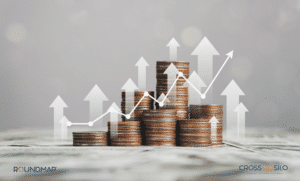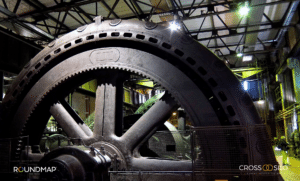For decades, the value chain has been the backbone of business, guiding organizations to create and deliver value efficiently. But as the world grows more complex, so do the ripple effects of those activities—some beneficial, others unintended. How do we account for these broader impacts on stakeholders and ecosystems?
Enter the impact chain, a framework that doesn’t replace the value chain but builds on it. Together, these two chains form a complementary system: the value chain focuses on creating and delivering value, while the impact chain amplifies the positive effects of that value and mitigates its adverse consequences. Without a value chain, there’s nothing to amplify or mitigate, but without an impact chain, the broader significance of value creation is often lost.
To visualize this relationship, imagine an arc bridge reflected in water. The bridge represents the value chain, solid and structured. The reflection symbolizes the impact chain, shaped by the bridge’s presence, while the ripples in the water illustrate the far-reaching effects of value creation—both positive and negative—on stakeholders and the ecosystem.
This post explores how these two chains work together, why their interplay matters, and how businesses can use this dual perspective to navigate complexity and create meaningful, sustainable outcomes.
Side-by-Side Comparison
| Aspect | Value Chain | Impact Chain |
| Focus | Creating and delivering value efficiently | Amplifying meaningful, long-term impact |
| Driver | Value as an outcome | Values and ethical considerations |
| Core Activities | Processes, systems, and measurable outputs | Relationships, collaboration, and trust |
| Orientation | Transactional and operational | Relational and aspirational |
| Time Horizon | Short-to-medium term | Long-term and sustainable |
| Perspective | Organization-centric (internal optimization) | Stakeholder-centric (external alignment) |
| Success Metrics | Profit, cost savings, and productivity | Social, environmental, and shared value |
| Key Relationships | Customers, suppliers, and internal teams | Ecosystems, communities, and multi-stakeholder networks |
| Underlying Purpose | Efficiency, competitive advantage | Purpose, equity, and collective well-being |
Deep Dive: Key Differences
The value chain emphasizes efficiency in creating value—whether that’s a product, service, or financial outcome. It’s about optimizing what the business produces. The impact chain shifts the focus to the bigger picture: How does this value affect stakeholders? Impact isn’t just about what’s created but about the difference it makes in the world.
Example: A company producing cheap plastic water bottles (maximize value) versus a company producing recyclable plastic water bottles while building community programs to reduce plastic waste globally (amplify impact).
The value chain is driven by measurable outputs, like profit or market share. In contrast, the impact chain is guided by values—what matters most to the organization and its stakeholders. It aligns with purpose, equity, and sustainability, making decisions that reflect ethical considerations.
Example: A company focused on driving sales (value chain) versus one that prioritizes fair wages and environmental stewardship alongside profitability (impact chain).
Value chains optimize processes and systems to maximize output. Impact chains, however, are rooted in relationships—building trust, fostering collaboration, and aligning with shared goals.
Example: Traditional supply chain management (value chain) versus co-creating solutions with stakeholders to address systemic issues like poverty or pollution (impact chain).
The value chain focuses on transactions—delivering a product or service to a customer. The impact chain focuses on relationships, aiming to create bonds that extend beyond the transaction and endure over time.
Example: A retailer selling goods (value chain) versus one building partnerships with local communities to support education and well-being (impact chain).
The value chain often prioritizes short- to medium-term goals, such as quarterly profits or annual growth targets. The impact chain takes a long-term view, considering how today’s actions affect tomorrow’s outcomes.
Example: A company reducing costs today to increase margins (value chain) versus investing in renewable energy to ensure a sustainable future (impact chain).
From Risk to Responsibility
The Impact Chain, as part of RoundMap’s Flywheel of Shared Success, is fundamentally different from the risk-assessing tools used in climate models. While climate-focused impact chains aim to map hazards, vulnerabilities, and exposures to assess risks and inform mitigation strategies, RoundMap’s Impact Chain complements Porter’s Value Chain by amplifying the positive value created and addressing any adverse effects.
It is not about identifying external threats but about ensuring that the value generated within the Value Chain translates into sustainable, equitable benefits for all stakeholders. The Impact Chain introduces a proactive dimension, aligning purpose with practice to maximize societal and environmental well-being. By working in tandem, the Value Chain and Impact Chain form a holistic framework where economic activities are seamlessly integrated with the ethical responsibility to enhance shared success and mitigate harm, creating a ripple effect of long-term prosperity.
Implications for Business Leaders
Shifting from a value chain to a value-impact chain mindset isn’t easy. It requires:
- Courage to challenge traditional metrics like profitability and productivity.
- Commitment to stakeholder engagement, including employees, customers, communities, and ecosystems.
- Willingness to embrace complexity, understanding that relationships can’t always be measured but are critical to long-term success.
For leaders, this means moving beyond short-term wins to build a legacy of lasting impact. It’s about aligning every decision with the values that matter most—to the organization and to the world.
Conclusion: Moving from Value to Values
The value chain and impact chain are not opposites; they’re complementary. Businesses still need to create value—but they must do so in a way that amplifies impact, driven by shared values. In a world where stakeholders demand more, the impact chain offers a pathway to deeper connections, stronger ecosystems, and a brighter future.
Are you ready to shift from value to values? Let’s start building your impact chain today.
Continue Reading on Striving & Thriving:

More Than Crumbs: The Case for True Value Creation
For decades, shareholder primacy has dictated corporate decision-making, driving businesses to prioritize short-term profits and disproportionate returns to shareholders over long-term sustainability and stakeholder value.

Beyond Extraction: Why Regenerative Business is the Only Way Forward
The RoundMap’s Regenerative Business Framework proposes a dual-cycle approach to business: one focused on value creation and another on impact. However, reality presents us with

RoundMap Regenerative Business Framework: Empowering the Present while Building the Future
Executive Summary The Regenerative Business Framework addresses the critical need for businesses to move beyond mere profitability toward regenerative practices that drive long-term growth and

Rethinking the Flywheel: Why Amazon’s Misinterpretation Misses the Mark
The concept of a flywheel, as originally designed, was never about spinning faster to achieve exponential growth. It was about stabilizing energy output—ensuring a steady,

From Striving to Thriving: How Amazon is a Strive-Driven Giant Failing to Thrive
Amazon has become synonymous with business success, often hailed as a master of efficiency, customer obsession, and innovation. At the heart of its growth strategy

The Flywheel of Shared Success: How Impact Drives Sustainable Growth
In the fast-paced world of business, the focus often rests on immediate value creation—developing products, closing deals, and driving revenue. While these activities generate vital

The Reciprocity Effect: How Giving Back Completes the Cycle
Ten years ago, I began developing the Customer Lifecycle—a map of frontline activities—because I saw how social media was reshaping the marketplace. It wasn’t just

Impact Strategies to Amplify Value and Mitigate Harm Across Stakeholders
What if doing the right thing wasn’t just a moral choice but a strategic one? What if amplifying your organization’s positive impact while mitigating harm

From Extraction to Contribution: Thriving Together with Shared Success
The Flywheel of Shared Success is designed to demonstrate that staying within the boundaries of responsible growth doesn’t mean limiting our ambitions—it means channeling them

The Twin Engines of Progress: Returns on Value and Impact
At the heart of the Flywheel of Shared Success lies the powerful interplay between Value Returns and Impact Returns, both of which operate on the

From Hopping for Cash to Building Bridges: Why Self-Interest Alone Can’t Sustain Shared Prosperity
What we’re proposing with the Flywheel of Shared Success is nothing short of a call to confront and correct our deeply flawed execution of Adam

If Adam Smith would still be alive, how would he perceive our modern economic systems?
If Adam Smith were to assess the state of our modern economic systems, his critique would likely be sharp yet eloquent, reflecting the moral gravitas
Author
-
Edwin Korver is a polymath celebrated for his mastery of systems thinking and integral philosophy, particularly in intricate business transformations. His company, CROSS/SILO, embodies his unwavering belief in the interdependence of stakeholders and the pivotal role of value creation in fostering growth, complemented by the power of storytelling to convey that value. Edwin pioneered the RoundMap®, an all-encompassing business framework. He envisions a future where business harmonizes profit with compassion, common sense, and EQuitability, a vision he explores further in his forthcoming book, "Leading from the Whole."
View all posts Creator of RoundMap® | CEO, CROSS-SILO.COM




